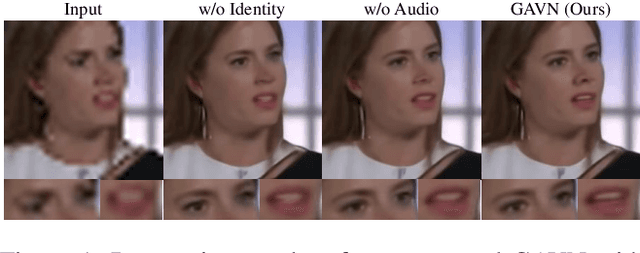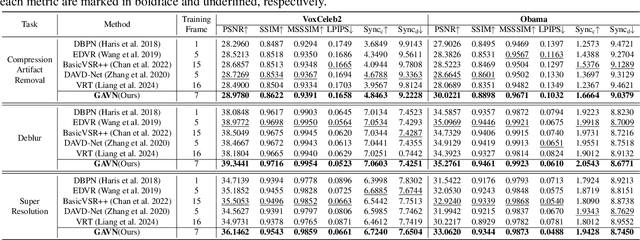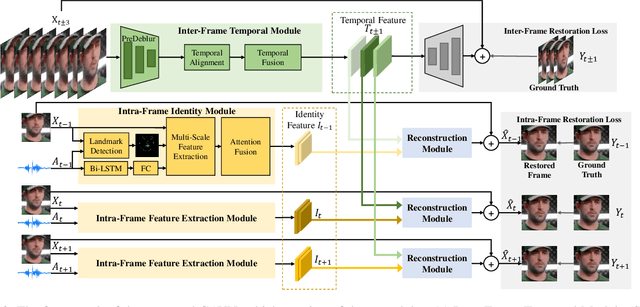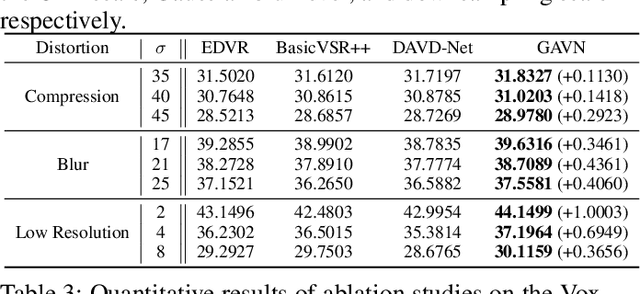Wei Sun
Max
Contrastive Retrieval Heads Improve Attention-Based Re-Ranking
Oct 02, 2025Abstract:The strong zero-shot and long-context capabilities of recent Large Language Models (LLMs) have paved the way for highly effective re-ranking systems. Attention-based re-rankers leverage attention weights from transformer heads to produce relevance scores, but not all heads are created equally: many contribute noise and redundancy, thus limiting performance. To address this, we introduce CoRe heads, a small set of retrieval heads identified via a contrastive scoring metric that explicitly rewards high attention heads that correlate with relevant documents, while downplaying nodes with higher attention that correlate with irrelevant documents. This relative ranking criterion isolates the most discriminative heads for re-ranking and yields a state-of-the-art list-wise re-ranker. Extensive experiments with three LLMs show that aggregated signals from CoRe heads, constituting less than 1% of all heads, substantially improve re-ranking accuracy over strong baselines. We further find that CoRe heads are concentrated in middle layers, and pruning the computation of final 50% of model layers preserves accuracy while significantly reducing inference time and memory usage.
A Computational Pipeline for Patient-Specific Modeling of Thoracic Aortic Aneurysm: From Medical Image to Finite Element Analysis
Sep 16, 2025Abstract:The aorta is the body's largest arterial vessel, serving as the primary pathway for oxygenated blood within the systemic circulation. Aortic aneurysms consistently rank among the top twenty causes of mortality in the United States. Thoracic aortic aneurysm (TAA) arises from abnormal dilation of the thoracic aorta and remains a clinically significant disease, ranking as one of the leading causes of death in adults. A thoracic aortic aneurysm ruptures when the integrity of all aortic wall layers is compromised due to elevated blood pressure. Currently, three-dimensional computed tomography (3D CT) is considered the gold standard for diagnosing TAA. The geometric characteristics of the aorta, which can be quantified from medical imaging, and stresses on the aortic wall, which can be obtained by finite element analysis (FEA), are critical in evaluating the risk of rupture and dissection. Deep learning based image segmentation has emerged as a reliable method for extracting anatomical regions of interest from medical images. Voxel based segmentation masks of anatomical structures are typically converted into structured mesh representation to enable accurate simulation. Hexahedral meshes are commonly used in finite element simulations of the aorta due to their computational efficiency and superior simulation accuracy. Due to anatomical variability, patient specific modeling enables detailed assessment of individual anatomical and biomechanics behaviors, supporting precise simulations, accurate diagnoses, and personalized treatment strategies. Finite element (FE) simulations provide valuable insights into the biomechanical behaviors of tissues and organs in clinical studies. Developing accurate FE models represents a crucial initial step in establishing a patient-specific, biomechanically based framework for predicting the risk of TAA.
VQualA 2025 Challenge on Visual Quality Comparison for Large Multimodal Models: Methods and Results
Sep 11, 2025Abstract:This paper presents a summary of the VQualA 2025 Challenge on Visual Quality Comparison for Large Multimodal Models (LMMs), hosted as part of the ICCV 2025 Workshop on Visual Quality Assessment. The challenge aims to evaluate and enhance the ability of state-of-the-art LMMs to perform open-ended and detailed reasoning about visual quality differences across multiple images. To this end, the competition introduces a novel benchmark comprising thousands of coarse-to-fine grained visual quality comparison tasks, spanning single images, pairs, and multi-image groups. Each task requires models to provide accurate quality judgments. The competition emphasizes holistic evaluation protocols, including 2AFC-based binary preference and multi-choice questions (MCQs). Around 100 participants submitted entries, with five models demonstrating the emerging capabilities of instruction-tuned LMMs on quality assessment. This challenge marks a significant step toward open-domain visual quality reasoning and comparison and serves as a catalyst for future research on interpretable and human-aligned quality evaluation systems.
ACE-RL: Adaptive Constraint-Enhanced Reward for Long-form Generation Reinforcement Learning
Sep 05, 2025Abstract:Large Language Models (LLMs) have demonstrated remarkable progress in long-context understanding, yet they face significant challenges in high-quality long-form generation. Existing studies primarily suffer from two limitations: (1) A heavy reliance on scarce, high-quality long-form response data for supervised fine-tuning (SFT) or for pairwise preference reward in reinforcement learning (RL). (2) Focus on coarse-grained quality optimization dimensions, such as relevance, coherence, and helpfulness, overlooking the fine-grained specifics inherent to diverse long-form generation scenarios. To address this issue, we propose a framework using Adaptive Constraint-Enhanced reward for long-form generation Reinforcement Learning (ACE-RL). ACE-RL first automatically deconstructs each instruction into a set of fine-grained, adaptive constraint criteria by identifying its underlying intents and demands. Subsequently, we design a reward mechanism that quantifies the quality of long-form responses based on their satisfaction over corresponding constraints, converting subjective quality evaluation into constraint verification. Finally, we utilize reinforcement learning to guide models toward superior long-form generation capabilities. Experimental results demonstrate that our ACE-RL framework significantly outperforms existing SFT and RL baselines by 20.70% and 7.32% on WritingBench, and our top-performing model even surpasses proprietary systems like GPT-4o by 7.10%, providing a more effective training paradigm for LLMs to generate high-quality content across diverse long-form generation scenarios.
Audio-Assisted Face Video Restoration with Temporal and Identity Complementary Learning
Aug 06, 2025



Abstract:Face videos accompanied by audio have become integral to our daily lives, while they often suffer from complex degradations. Most face video restoration methods neglect the intrinsic correlations between the visual and audio features, especially in mouth regions. A few audio-aided face video restoration methods have been proposed, but they only focus on compression artifact removal. In this paper, we propose a General Audio-assisted face Video restoration Network (GAVN) to address various types of streaming video distortions via identity and temporal complementary learning. Specifically, GAVN first captures inter-frame temporal features in the low-resolution space to restore frames coarsely and save computational cost. Then, GAVN extracts intra-frame identity features in the high-resolution space with the assistance of audio signals and face landmarks to restore more facial details. Finally, the reconstruction module integrates temporal features and identity features to generate high-quality face videos. Experimental results demonstrate that GAVN outperforms the existing state-of-the-art methods on face video compression artifact removal, deblurring, and super-resolution. Codes will be released upon publication.
CompressedVQA-HDR: Generalized Full-reference and No-reference Quality Assessment Models for Compressed High Dynamic Range Videos
Jul 16, 2025Abstract:Video compression is a standard procedure applied to all videos to minimize storage and transmission demands while preserving visual quality as much as possible. Therefore, evaluating the visual quality of compressed videos is crucial for guiding the practical usage and further development of video compression algorithms. Although numerous compressed video quality assessment (VQA) methods have been proposed, they often lack the generalization capability needed to handle the increasing diversity of video types, particularly high dynamic range (HDR) content. In this paper, we introduce CompressedVQA-HDR, an effective VQA framework designed to address the challenges of HDR video quality assessment. Specifically, we adopt the Swin Transformer and SigLip 2 as the backbone networks for the proposed full-reference (FR) and no-reference (NR) VQA models, respectively. For the FR model, we compute deep structural and textural similarities between reference and distorted frames using intermediate-layer features extracted from the Swin Transformer as its quality-aware feature representation. For the NR model, we extract the global mean of the final-layer feature maps from SigLip 2 as its quality-aware representation. To mitigate the issue of limited HDR training data, we pre-train the FR model on a large-scale standard dynamic range (SDR) VQA dataset and fine-tune it on the HDRSDR-VQA dataset. For the NR model, we employ an iterative mixed-dataset training strategy across multiple compressed VQA datasets, followed by fine-tuning on the HDRSDR-VQA dataset. Experimental results show that our models achieve state-of-the-art performance compared to existing FR and NR VQA models. Moreover, CompressedVQA-HDR-FR won first place in the FR track of the Generalizable HDR & SDR Video Quality Measurement Grand Challenge at IEEE ICME 2025. The code is available at https://github.com/sunwei925/CompressedVQA-HDR.
Mitigating Negative Interference in Multilingual Sequential Knowledge Editing through Null-Space Constraints
Jun 12, 2025Abstract:Efficiently updating multilingual knowledge in large language models (LLMs), while preserving consistent factual representations across languages, remains a long-standing and unresolved challenge. While deploying separate editing systems for each language might seem viable, this approach incurs substantial costs due to the need to manage multiple models. A more efficient solution involves integrating knowledge updates across all languages into a unified model. However, performing sequential edits across languages often leads to destructive parameter interference, significantly degrading multilingual generalization and the accuracy of injected knowledge. To address this challenge, we propose LangEdit, a novel null-space constrained framework designed to precisely isolate language-specific knowledge updates. The core innovation of LangEdit lies in its ability to project parameter updates for each language onto the orthogonal complement of previous updated subspaces. This approach mathematically guarantees update independence while preserving multilingual generalization capabilities. We conduct a comprehensive evaluation across three model architectures, six languages, and four downstream tasks, demonstrating that LangEdit effectively mitigates parameter interference and outperforms existing state-of-the-art editing methods. Our results highlight its potential for enabling efficient and accurate multilingual knowledge updates in LLMs. The code is available at https://github.com/VRCMF/LangEdit.git.
Occlusion-Aware 3D Hand-Object Pose Estimation with Masked AutoEncoders
Jun 12, 2025Abstract:Hand-object pose estimation from monocular RGB images remains a significant challenge mainly due to the severe occlusions inherent in hand-object interactions. Existing methods do not sufficiently explore global structural perception and reasoning, which limits their effectiveness in handling occluded hand-object interactions. To address this challenge, we propose an occlusion-aware hand-object pose estimation method based on masked autoencoders, termed as HOMAE. Specifically, we propose a target-focused masking strategy that imposes structured occlusion on regions of hand-object interaction, encouraging the model to learn context-aware features and reason about the occluded structures. We further integrate multi-scale features extracted from the decoder to predict a signed distance field (SDF), capturing both global context and fine-grained geometry. To enhance geometric perception, we combine the implicit SDF with an explicit point cloud derived from the SDF, leveraging the complementary strengths of both representations. This fusion enables more robust handling of occluded regions by combining the global context from the SDF with the precise local geometry provided by the point cloud. Extensive experiments on challenging DexYCB and HO3Dv2 benchmarks demonstrate that HOMAE achieves state-of-the-art performance in hand-object pose estimation. We will release our code and model.
KTAE: A Model-Free Algorithm to Key-Tokens Advantage Estimation in Mathematical Reasoning
May 22, 2025Abstract:Recent advances have demonstrated that integrating reinforcement learning with rule-based rewards can significantly enhance the reasoning capabilities of large language models, even without supervised fine-tuning. However, prevalent reinforcement learning algorithms such as GRPO and its variants like DAPO, suffer from a coarse granularity issue when computing the advantage. Specifically, they compute rollout-level advantages that assign identical values to every token within a sequence, failing to capture token-specific contributions and hindering effective learning. To address this limitation, we propose Key-token Advantage Estimation (KTAE) - a novel algorithm that estimates fine-grained, token-level advantages without introducing additional models. KTAE leverages the correctness of sampled rollouts and applies statistical analysis to quantify the importance of individual tokens within a sequence to the final outcome. This quantified token-level importance is then combined with the rollout-level advantage to obtain a more fine-grained token-level advantage estimation. Empirical results show that models trained with GRPO+KTAE and DAPO+KTAE outperform baseline methods across five mathematical reasoning benchmarks. Notably, they achieve higher accuracy with shorter responses and even surpass R1-Distill-Qwen-1.5B using the same base model.
NTIRE 2025 challenge on Text to Image Generation Model Quality Assessment
May 22, 2025Abstract:This paper reports on the NTIRE 2025 challenge on Text to Image (T2I) generation model quality assessment, which will be held in conjunction with the New Trends in Image Restoration and Enhancement Workshop (NTIRE) at CVPR 2025. The aim of this challenge is to address the fine-grained quality assessment of text-to-image generation models. This challenge evaluates text-to-image models from two aspects: image-text alignment and image structural distortion detection, and is divided into the alignment track and the structural track. The alignment track uses the EvalMuse-40K, which contains around 40K AI-Generated Images (AIGIs) generated by 20 popular generative models. The alignment track has a total of 371 registered participants. A total of 1,883 submissions are received in the development phase, and 507 submissions are received in the test phase. Finally, 12 participating teams submitted their models and fact sheets. The structure track uses the EvalMuse-Structure, which contains 10,000 AI-Generated Images (AIGIs) with corresponding structural distortion mask. A total of 211 participants have registered in the structure track. A total of 1155 submissions are received in the development phase, and 487 submissions are received in the test phase. Finally, 8 participating teams submitted their models and fact sheets. Almost all methods have achieved better results than baseline methods, and the winning methods in both tracks have demonstrated superior prediction performance on T2I model quality assessment.
 Add to Chrome
Add to Chrome Add to Firefox
Add to Firefox Add to Edge
Add to Edge